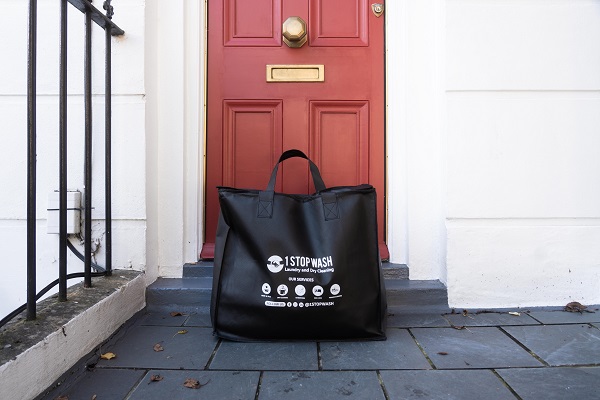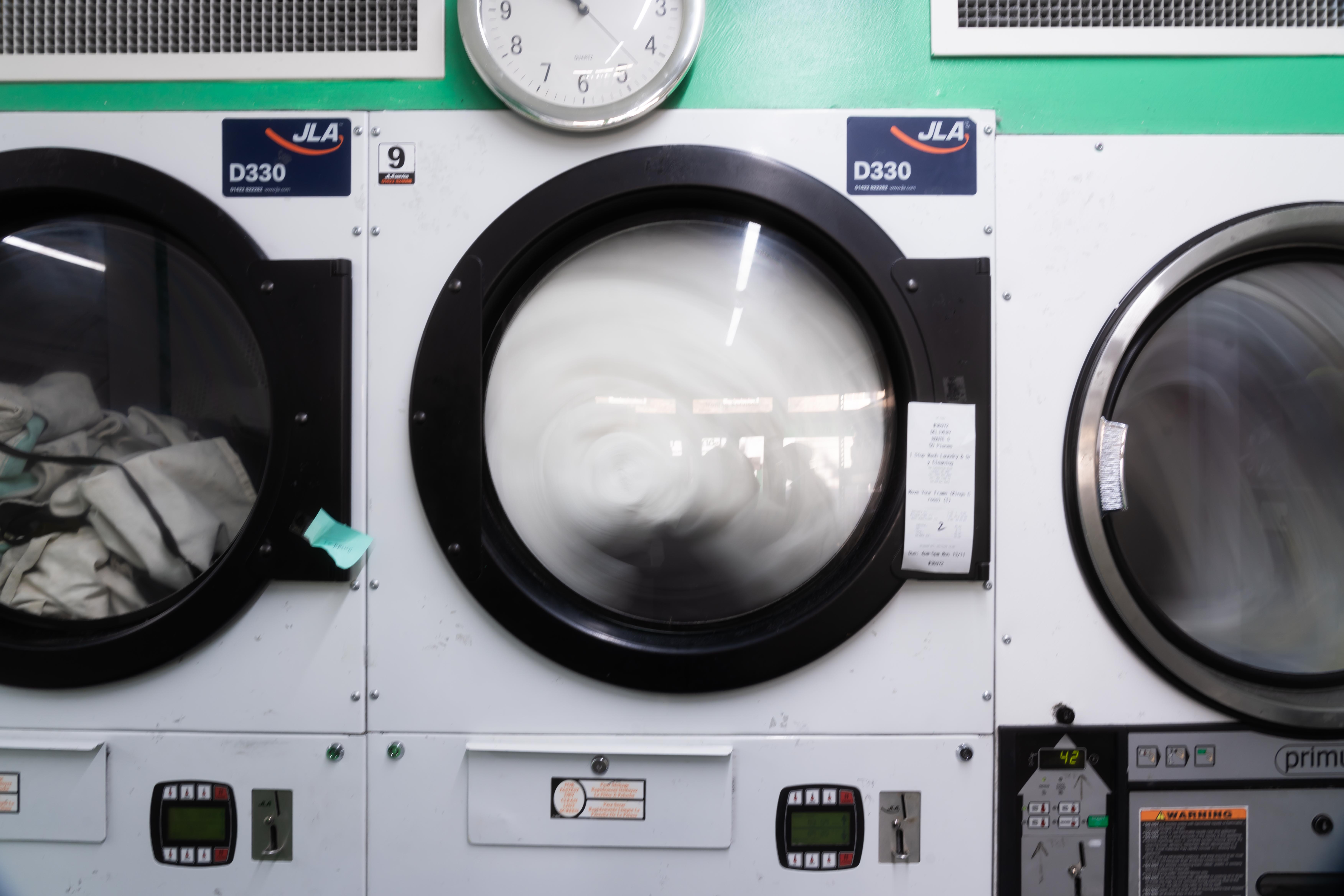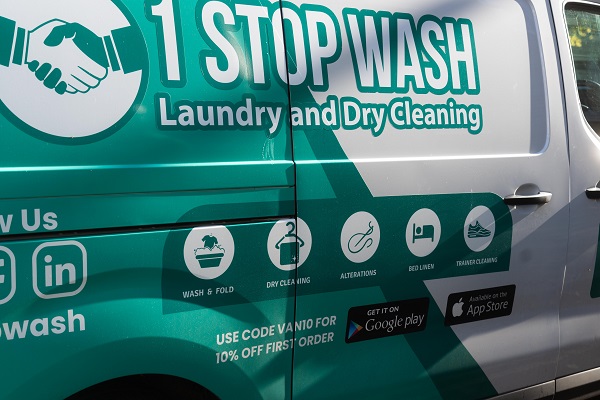
Introduction: A Fresh Take on Clean Clothes
Ever had that moment when you picked up your favorite dress from the dry cleaners, only to be greeted by a sneeze attack? Ah, the joys of unexpected allergies. Well, you’re in the right place for some life-saving “dry cleaning tips” that won’t leave you reaching for a tissue.
Imagine this: You’re all set for a big day, your outfit crisp and clean, fresh from the dry cleaner. But instead of oohs and aahs, your entrance is marked by achoos! Not exactly the impact you were aiming for, right? It turns out, the very process meant to make our clothes immaculate can sometimes leave us feeling a little under the weather.
But fear not! We’re about to dive into a world where clean clothes and clear noses coexist happily. Think of it as your go-to guide for navigating the tricky waters of dry cleaning when your allergies want to be the captain. We’ll uncover the secret handshake between looking sharp and breathing easy, all while keeping those pesky allergens at bay.
So, buckle up and get ready to arm yourself with knowledge. With these savvy tips, you’ll be mastering the art of allergy-friendly dry cleaning in no time. Say goodbye to sneeze-inducing surprises and hello to a fresh take on clean clothes that feel as good as they look.
Decoding Your Sniffles: Allergies and Dry Cleaning
Navigating the world of clean clothes when you’re battling allergies can be a bit like walking through a minefield blindfolded. But why does something as simple as picking up your dry cleaning come with a side of sniffles or even more serious reactions? Let’s break it down.
Dry Cleaning Demystified: What's Really in the Mix?
Ever wondered what happens to your clothes after you drop them off at the dry cleaner? Let’s unwrap the mystery and see why those with allergies need to pay extra attention.
The Dry Cleaning Process: A Closer Look
Dry cleaning isn’t “dry” in the sense that it involves no liquids; it simply doesn’t use water. Instead, clothes are cleaned with solvents that dissolve dirt and stains.
- Step 1: Pre-treatment of stains, much like a pre-wash at home.
- Step 2: Clothes are placed in a machine and cleaned with a solvent. Perchloroethylene (perc), a common solvent, is effective but can irritate allergies.
- Step 3: The solvent is extracted, and clothes are dried.
Allergy Alerts: Chemicals and Contaminants
- Perchloroethylene (Perc): Known for its cleaning prowess but notorious for causing allergic reactions ranging from skin irritation to respiratory issues.
- Eco-Friendly Alternatives: Some cleaners use water (wet cleaning) or CO2 cleaning, reducing the risk of allergic reactions.
Communicate for Care
- Speak Up: Informing your dry cleaner about your allergies is crucial. They might opt for alternative methods or take extra precautions.
Common Allergens in the Mix
Beyond chemicals, dry cleaning environments may harbor:
- Dust mites
- Pet dander
- Mold spores


Key Takeaways for Minimizing Allergy Risks
- Opt for dry cleaners that offer “green” or less toxic cleaning methods.
- Always communicate your allergy concerns to ensure your clothes are handled with care.
Understanding the dry cleaning process and its potential allergens empowers you to make informed decisions, ensuring your clothes come back clean and safe for your health.
Smart Strategies for Allergy-Sensitive Souls
Navigating the world of dry cleaning when you’re sensitive to allergens requires a bit of strategy and a lot of communication. Here’s how you can keep your clothes clean and your allergies at bay.
Choosing a Dry Cleaner with a Green Thumb
Not all heroes wear capes; some just use eco-friendly dry cleaning methods. Here’s why picking the right dry cleaner matters:
- Eco-Friendly Methods: Seek out cleaners that use water-based (wet cleaning) or carbon dioxide cleaning methods. These alternatives to traditional perc-based cleaning are gentler on your clothes and your health.
- Benefits for Allergies: Green cleaning methods typically use chemicals that are less irritating, minimizing your exposure to potential allergens.
Essential Questions to Ask Your Dry Cleaner
To make sure your dry cleaner is the right fit for your allergy needs, here are some must-ask questions:
- What cleaning solvents do you use? Knowing whether they use perchloroethylene or a greener alternative can help you make an informed decision.
- Can you offer hypoallergenic cleaning options? Some dry cleaners are equipped to offer services that cater specifically to allergy sufferers.
- How do you handle clothes for customers with allergies? A dry cleaner aware of allergy sensitivities may take extra precautions with your garments.

Minimizing Exposure to Allergens
Even with the best dry cleaning practices, it’s possible to encounter allergens like dust mites, pet dander, and mold spores. Here’s what you can do:
- Communicate Your Needs: Clearly inform your dry cleaner of your allergies. This simple step can prompt them to take additional measures to protect your clothes.
- Air Out Your Clothes: Once you bring your clothes home, airing them out before storing them can help dissipate any residual chemicals.
The Great Escape: Dodging Chemical Culprits
For those of us who greet our freshly dry-cleaned clothes with a sneeze rather than a smile, it’s time to explore safer paths. Let’s dive into how you can keep your wardrobe fresh and your allergies at bay, all from the comfort of your home, and take a look at alternative services that prioritize your health.
Home-Based Hacks for “Dry Cleaning” Without the Sneeze
Transform your home into a sneeze-free dry cleaning sanctuary with these simple yet effective tips:
- Steam Cleaning: Use a garment steamer to remove wrinkles and freshen up clothes. Steam can kill dust mites and remove odors without harsh chemicals.
- DIY Spot Cleaning: Tackle stains with gentle, natural solutions. Mixing baking soda and water can create a potent spot cleaner for most fabrics.
- Vodka Spray: A light vodka spray (yes, vodka!) can eliminate odors without leaving a scent. The alcohol content helps to kill bacteria that cause smells.
Spotlight on Health-Focused Dry Cleaning Services
Not all dry cleaners are created equal. Here’s how to find one that won’t leave you reaching for antihistamines:
- Seek Out “Green” Cleaners: Look for services that advertise eco-friendly or green cleaning methods. These establishments use solvents that are less harsh and more likely to be kind to your allergies.
- Ask About Their Process: Find out if potential cleaners use perchloroethylene or opt for safer, modern alternatives like liquid carbon dioxide or silicone-based cleaners.
- Check for Allergy-Aware Services: Some dry cleaners are specifically geared towards customers with sensitivities and may offer specialized services to minimize exposure to allergens.
Making the Switch
Switching to allergy-friendly dry cleaning methods doesn’t just benefit your health; it also contributes to a healthier environment. By opting for home-based cleaning hacks or seeking out dry cleaners who prioritize safe, green methods, you’re taking a stand for your well-being and the planet’s. Remember, communication is key—don’t hesitate to discuss your allergy concerns with your dry cleaner. Together, you can find a solution that keeps your clothes clean and your allergies under control.
Suit Up! Prepping Your Wardrobe for Allergy-Free Dry Cleaning
When it comes to battling allergens in your dry cleaning routine, a little preparation goes a long way. Here’s how to prep your wardrobe for a safer, sneeze-free experience and ensure your freshly cleaned clothes are as allergy-friendly as possible.
Tips on Treating Your Clothes Before the Dry Cleaners
Prepping your clothes before handing them over can help minimize your exposure to allergens. Follow these steps to safeguard your garments:
- Spot Clean at Home: Treat any stains with mild, natural solutions. This reduces the need for harsh chemicals at the cleaners.
- Bagging it Right: Use breathable cloth bags instead of plastic to transport your clothes. This prevents trapping any allergens inside.
- Communicate Clearly: Attach a note or inform your cleaner about your allergies, emphasizing the need for hypoallergenic solvents if available.
Airing Out Secrets: Best Practices for Freshly Cleaned Clothes
Bringing your clothes home doesn’t mean the allergy-proofing stops there. Here’s how to introduce them back into your closet safely:
- Air Them Out: Before storing, air out your clothes in a well-ventilated area. This helps dissipate any residual chemical odors.
- Use Garment Bags: Store dry-cleaned clothes in breathable garment bags to protect them from dust mites and other allergens.
- Regular Checks: Periodically inspect your wardrobe for signs of mold or mildew, especially in damp seasons.
Embracing a Healthier Clean
Arming yourself with these strategies not only protects you from potential allergens but also extends the life of your favorite outfits. By treating your clothes with care before and after dry cleaning, and choosing cleaners that align with your health needs, you create a safer environment for your wardrobe and yourself. Remember, the goal is to enjoy the feeling of freshly cleaned clothes without worrying about the aftermath on your allergies.
Guarding Your Castle: Allergy-Proofing After Dry Cleaning
Bringing home dry-cleaned clothes shouldn’t mean inviting allergens into your living space. Here’s how you can create a fortress against those sneaky intruders and ensure your home remains a sanctuary for comfort and health.
Practical Steps to Minimize Bringing Allergens Back Home
Taking preventative measures right from the dry cleaner’s doorstep can make all the difference. Consider these tips:
- Air Out Before Entry: Before bringing your garments inside, air them out in an open, well-ventilated area. This helps to reduce any residual chemical odors that could aggravate allergies.
- Transport Smart: Use breathable, cloth bags for transport instead of the plastic covers provided by cleaners. Plastic can trap chemicals and moisture, creating a breeding ground for mold and dust mites.
Suggestions for Safe Storage of Dry-Cleaned Garments
Once your clothes are home and aired out, storing them properly can further protect against allergens.
- Breathable Garment Bags: Invest in breathable garment bags for storing dry-cleaned clothes. These allow air circulation, preventing moisture buildup which can lead to mold growth.
- Keep It Dry and Cool: Store your garments in a dry, cool place. Humidity and warmth can encourage the growth of mold and mildew, as well as provide a haven for dust mites.
- Regularly Clean Your Closet: Regular cleaning of your closet space can help keep allergens at bay. Wipe down shelves and vacuum the closet floor to remove dust mites and pet dander that might have accumulated.
Building Your Allergy-Proof Wardrobe
By following these guidelines, you can enjoy the benefits of professionally cleaned clothes without the worry of allergic reactions. Communication with your dry cleaner, proper airing out, smart transportation, and thoughtful storage are your tools in maintaining an allergy-friendly environment. Remember, the key to minimizing allergy triggers from dry cleaning lies in proactive prevention and informed choices.
DIY Dry Cleaning: A Sneezefree Blueprint
For those of us navigating the sneezy hazards of allergy sensitivities, stepping into the realm of DIY dry cleaning can be a game-changer. Let’s explore how to keep your wardrobe in top-notch condition without stepping foot in a dry cleaner, focusing on allergy-friendly methods.
Evaluating Home Dry Cleaning Kits Through an Allergy-Aware Lens
Home dry cleaning kits offer a convenient alternative to traditional services, but not all are created equal when it comes to allergies.
- Check the Chemical List: Look for kits that use non-toxic, fragrance-free cleaning agents to reduce potential irritants.
- Seek Out Hypoallergenic Certifications: Some products are specifically designed with allergy sufferers in mind. These are your best bet.
The Natural Path: Eco-Friendly and Gentle Alternatives to Traditional Dry Cleaning
Embracing natural cleaning methods not only protects your health but also the environment.
- Steam Cleaning: A powerful steamer can refresh fabrics and kill dust mites without chemicals. Just be sure to let the fabric dry completely to avoid mold.
- Vodka Spritz: A light misting of vodka on clothing can kill bacteria and neutralize odors without harsh chemicals or lingering scents.
- Baking Soda: For odors, sprinkle baking soda on garments and let sit before brushing off. This natural deodorizer is gentle and effective.
Crafting Your Allergy-Friendly Cleaning Routine
By incorporating these DIY dry cleaning strategies, you can maintain a fresh and clean wardrobe without exacerbating allergies. Communication with professionals, when you do choose to use dry cleaners, combined with at-home care, creates a comprehensive approach to managing your sensitivities. Remember, the goal is to create a safe, sneeze-free environment for your clothes and yourself, leveraging the power of eco-friendly and gentle cleaning solutions.
Conclusion: Wrapping It Up Without the Itch
Navigating the world of dry cleaning with allergies can seem daunting at first, but armed with the right knowledge and strategies, it’s entirely possible to enjoy a clean wardrobe without the worry of allergic reactions. Here’s a brief recap of the top tips to help you breathe easier.
Top Tips for Allergy-Sensitive Dry Cleaning
- Choose Eco-Friendly Dry Cleaners: Opt for services that use “green” cleaning methods, reducing your exposure to harsh chemicals like perchloroethylene (perc).
- Communicate Your Allergies: Always inform your dry cleaner about your sensitivities to ensure they take the necessary precautions with your garments.
- DIY Dry Cleaning: Explore home-based dry cleaning kits and natural cleaning methods for a safe alternative to traditional dry cleaning.
- Allergen Awareness: Remember, dust mites, pet dander, and mold spores can lurk in dry cleaning environments. Choose your dry cleaner wisely and maintain a clean storage area at home.
Embrace Allergy-Friendly Practices
Making these practices a part of your routine can significantly reduce the risk of allergic reactions and ensure your dry cleaning experience is both safe and satisfying. By choosing the right dry cleaner, communicating your needs, and utilizing home dry cleaning solutions, you’re taking a big step towards a healthier lifestyle and a sneeze-free wardrobe. Remember, it’s all about creating a balance between cleanliness and comfort, without having to compromise on either.

 0207 837 4997
0207 837 4997